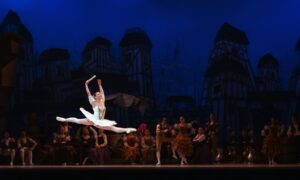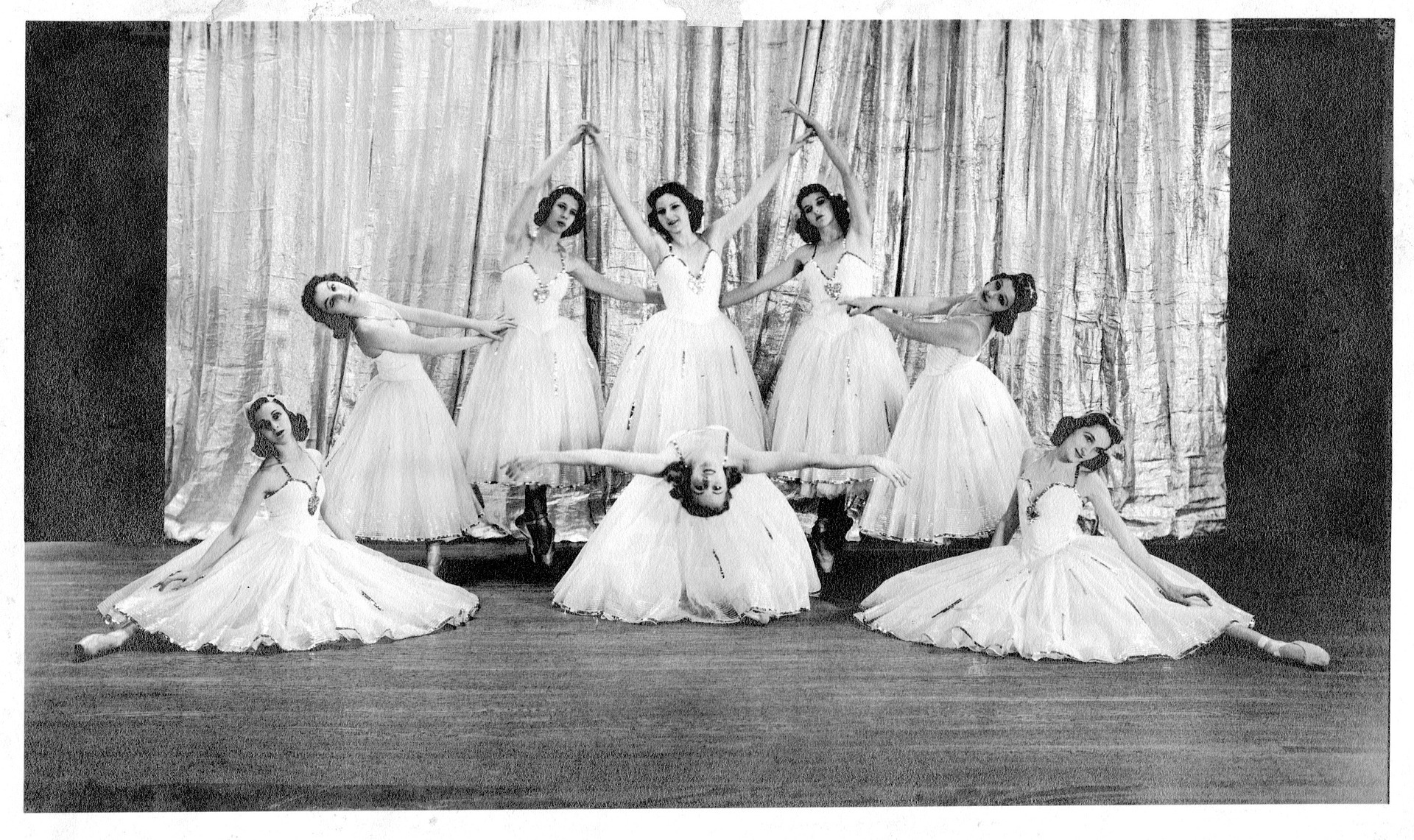The History of the Dance Recital: From Its Origins to Modern-Day Performances
The dance recital has become a staple of dance culture, with young dancers eagerly preparing for their moment in the spotlight. But where did this tradition begin? The history of the dance recital is a fascinating journey through time, revealing the evolution of dance as an art form and the role of the recital in showcasing its beauty.
The earliest records of dance date back to ancient times, with cave paintings in India depicting dance movements as early as 8000 BCE. By the era of ancient Greece, dance had become a part of religious and celebratory events, and it continued to evolve over the centuries. However, the concept of a dance recital as we know it today did not emerge until much later.
The first known concerts where people were charged admission occurred in 1672 at violinist John Banister’s home in Whitefriars, London. However, it wasn’t until the 19th century that dance performances began to take on a more formal structure, with dancers rehearsing and performing specific pieces for a paying audience. As dance continued to gain popularity as an art form, the dance recital became an essential platform for dancers to showcase their skills and artistry.
The Origins of Dance Recitals
Dance recitals have a long history, with performances dating back to the 16th century in Europe. During this time, dance was a popular form of entertainment in the courts of royalty and aristocrats. Dances were often performed as part of grand celebrations, such as weddings and coronations, and were intended to showcase the elegance and grace of the dancers.
Over time, dance recitals evolved to include a wide range of dance styles and performance venues, from theaters and auditoriums to school gymnasiums and community centers. Today, dance recitals are standard in the dance world and are used to showcase the hard work and dedication of dancers of all ages and skill levels.
One of the critical factors that led to the rise of dance recitals was the development of dance schools and studios. These institutions provided a structured environment for dancers to learn and practice their craft, often culminating in a public performance or recital. This allowed dancers to showcase their skills and progress and provided a sense of accomplishment and pride.
Another critical factor in the evolution of dance recitals was the rise of dance competitions. These events allowed dancers to compete against one another in a variety of categories, such as technique, choreography, and performance. Dance competitions provided a platform for dancers to showcase their skills and gain recognition within the dance community and helped raise the dance profile as an art form.
The origins of dance recitals can be traced back to the courtly dances of the 16th century and have evolved to become a vital component of the dance world. Whether performed in a grand theater or a small community center, dance recitals continue to provide a platform for dancers to showcase their skills and express their creativity.
The Evolution of Dance Recitals
Dance recitals have a rich history that has evolved over the years. In this section, we will explore the emergence of the stage, the development of choreography, and the influence of costumes.
The Emergence of the Stage
The stage has played an integral role in the evolution of dance recitals. Dance performances were held in ballrooms or other large spaces in the early days. However, as dance became more popular, it became necessary to have a dedicated space for performances. The first dance recital was held in the 18th century in Paris, France, at the Académie Royale de Musique. This marked the beginning of the dance recital as we know it today.
The Development of Choreography
 Choreography has also played a significant role in the evolution of dance recitals. In the early days, dance performances were often improvised, with dancers creating their own steps and movements. However, as dance became more formalized, choreography became essential to dance recitals. Today, choreographers work closely with dancers to create complex and intricate dance routines that are both beautiful and technically challenging.
Choreography has also played a significant role in the evolution of dance recitals. In the early days, dance performances were often improvised, with dancers creating their own steps and movements. However, as dance became more formalized, choreography became essential to dance recitals. Today, choreographers work closely with dancers to create complex and intricate dance routines that are both beautiful and technically challenging.
The Influence of Costumes
Costumes have always been an essential part of dance recitals. In the early days, dancers wore simple costumes that allowed them to move freely. However, as dance became more formalized, costumes became more elaborate and intricate. Today, costumes are an essential part of dance recitals, with designers creating stunning and detailed costumes that add to the beauty and elegance of the performance.
In conclusion, dance recitals have come a long way since their inception. From the emergence of the stage to the development of choreography and the influence of costumes, dance recitals have evolved into a beautiful and complex art form that continues to captivate audiences worldwide.
The Day of the Dance Recital
The day of the dance recital is an exciting and busy time for both dancers and parents alike. There are several things to remember to ensure a smooth and stress-free experience.
Backstage
Backstage can be chaotic and busy, with dancers rushing to get into costume and prepare for their routines. Parents need to be aware of the backstage rules and procedures set by the dance studio. This may include designated areas for dancers and parents and rules regarding food and drink backstage.
Parents can help their young dancers feel more confident and prepared by reviewing their routines with them and practicing any tricky steps. It’s also helpful to bring a small bag with extra tights, hair ties, and other essentials in case of emergencies.
Hair and Makeup
Hair and makeup are essential aspects of a dancer’s appearance and can help boost their confidence on stage. Parents should ensure that their dancers’ hair and makeup are done according to the studio’s guidelines and that they have any necessary supplies on hand.
Practicing hair and makeup before the recital day is a good idea to avoid any last-minute mishaps. Parents can also bring a small mirror and touch-up kit for quick fixes backstage.
Snacks and Games
Recitals can be long and tiring, so it’s important to pack plenty of snacks and games to keep dancers occupied during downtime. Healthy snacks like fruit, granola bars, and water are great choices to keep dancers energized.
Parents can also bring small games or activities to entertain dancers between performances. Coloring books, puzzles, and small toys are all excellent options. Check out these 5 Screen-Free Boredom Busters Between Dances ideas.
Parents and dancers can have a successful and enjoyable day at the dance recital by following these tips.
Particular Types of Dance Recitals
Dance recitals come in all shapes and sizes, and the types of recitals can vary depending on the age and experience of the dancers, the kind of dance being performed, and the goals of the recital. Here are a few special types of dance recitals that are worth exploring:
Ballet Recitals
Ballet recitals are often more formal and structured than other dance recitals. Ballet is a highly technical dance form that requires years of training and practice, and ballet recitals often showcase dancers’ progress in their training. These recitals typically feature classical ballets, such as “The Nutcracker” or “Swan Lake,” and may include variations or solos performed by individual dancers.
Preschool and Young Children
Preschool and young children’s dance recitals are often less formal than other types of recitals, and they may focus more on fun and creativity than technical skills. These recitals may feature simple choreography, colorful costumes, and upbeat music that is easy for young children to follow. Parents and siblings are often invited to attend these recitals, which can be an excellent way for young children to gain confidence and show off their dance skills.
Annual Recitals
Annual recitals are a staple of many dance studios, allowing dancers of all ages and skill levels to showcase their progress over a year. These recitals may feature a variety of dance styles, including ballet, jazz, tap, and hip-hop, and they may include group and solo performances. Annual recitals often have a theme or storyline that ties the performances together, and they may consist of special effects, lighting, and costumes to enhance the overall experience.
Awards
Some dance recitals include awards ceremonies, where dancers are recognized for their achievements and progress over a year. Awards may be given for technical skill, creativity, dedication, and other qualities, and they may be presented by teachers, parents, or other dance community members. Awards ceremonies can be a great way to motivate dancers and encourage them to continue their training and practice.
Overall, dance recitals are an important part of the dance journey, and they allow dancers to showcase their skills, creativity, and passion for dance. Whether you are a beginner or an experienced dancer, there is a dance recital for you!

